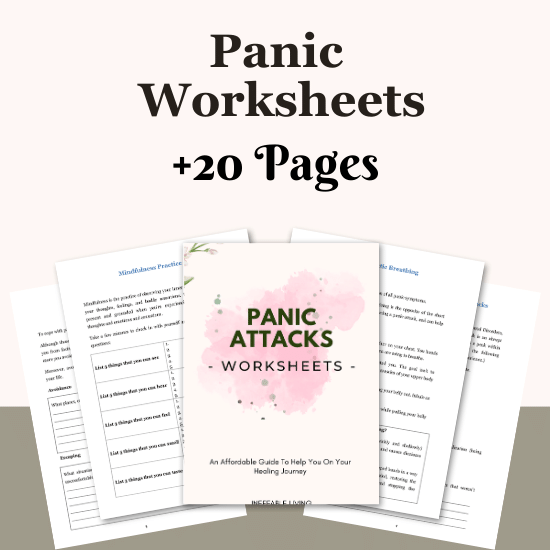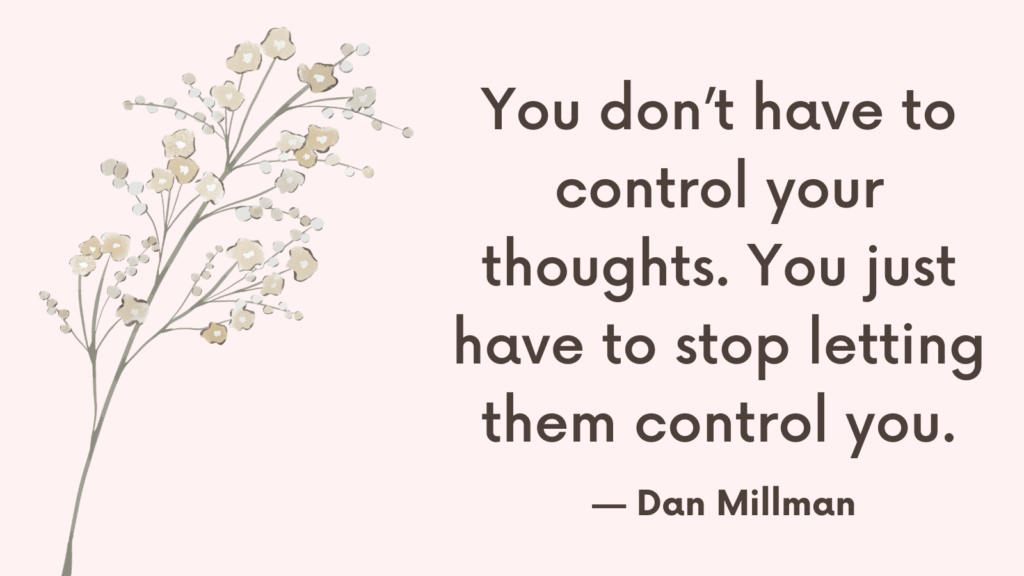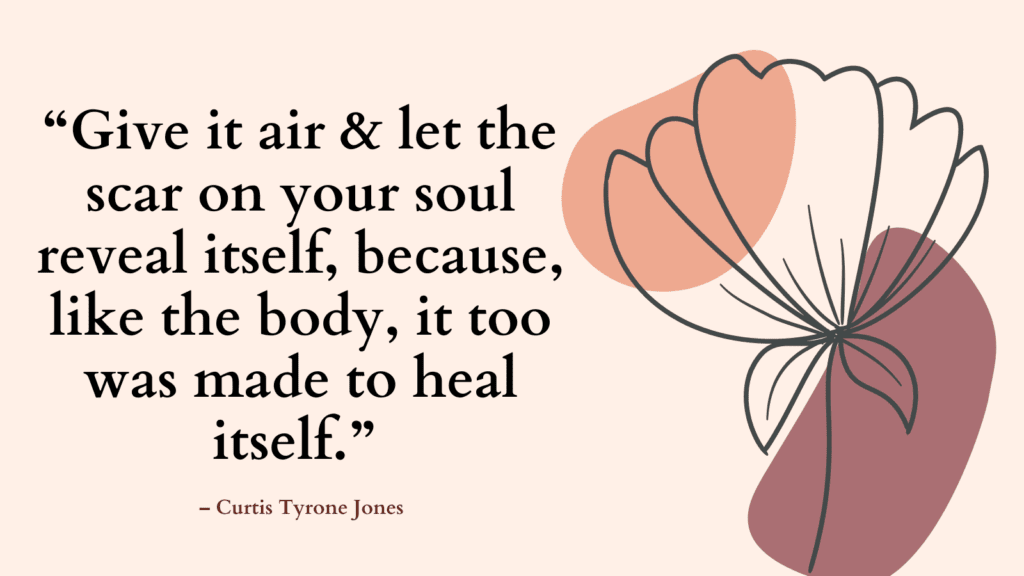In this post, you’re going to learn all about silent panic attacks – its symptoms and ways to cope.
What Are Silent Panic Attacks?
Silent panic attacks, also known as “covert” or “hidden” panic attacks, are episodes of intense anxiety that do not have outwardly visible signs or symptoms.
While traditional panic attacks often involve obvious physical symptoms such as rapid heartbeat, sweating, and trembling, silent panic attacks may manifest with more subtle internal experiences, such as overwhelming fear, racing thoughts, and a sense of impending doom.
In the DSM-5 (Diagnostic and Statistical Manual of Mental Disorders, Fifth Edition), silent panic attacks would typically be characterized under the diagnosis of panic disorder.
Panic disorder is a specific anxiety disorder that is marked by recurring and unexpected panic attacks, which are often accompanied by persistent concerns about future attacks and changes in behavior in an effort to avoid such attacks.
Silent Panic Attacks Symptoms
Here are ten potential symptoms associated with silent panic attacks:
1. Intense Fear: Individuals may experience overwhelming feelings of fear or dread without exhibiting visible signs of distress.
2. Intrusive Thoughts: Persistent, intrusive thoughts or worries that feel uncontrollable and distressing, often related to perceived threats or dangers.
3. Hypervigilance: Heightened alertness or sensitivity to perceived threats, even in the absence of external danger.
4. Racing Thoughts: A rapid, uncontrollable stream of thoughts that may feel chaotic or overwhelming.
5. Physical Sensations: Internal sensations such as tightness in the chest, increased heart rate, dizziness, or difficulty breathing, despite no visible signs of distress.
6. Emotional Disconnection: Feeling detached from one’s surroundings or experiencing emotional numbness, detachment, or dissociation.
7. Difficulty Concentrating: Struggles with focus, attention, or cognitive processing due to the overwhelming internal experiences.
8. Muscle Tension: Tension or tightness in muscles, particularly in the neck, shoulders, or jaw, without obvious physical cause.
9. Persistent Stress or Anxiety: Lingering feelings of stress, anxiety, or unease that persist beyond the immediate episode, impacting overall well-being.
It’s important to recognize that silent panic attacks can manifest in a variety of ways, and individuals may experience a combination of these symptoms.
Related: How To Overcome Agoraphobia Without Medication? 9-Step Guide To Control Panic Attack In Public
How to Cope with Silent Panic Attacks?
Here are some coping techniques that can help you navigate and alleviate the symptoms of silent panic attacks:
1. Practice Deep Breathing
Engaging in deep breathing exercises can help regulate your body’s stress response and promote a sense of calm during a silent panic attack.
Focus on slow, deliberate breaths, taking in air deeply through your nose and exhaling slowly through your mouth.
2. Mindfulness Meditation
Incorporating mindfulness meditation into your daily routine can help cultivate emotional resilience and reduce the impact of silent panic attacks.
By focusing on the present moment without judgment, you can learn to observe and accept your internal experiences without becoming overwhelmed by them.
3. Cognitive Restructuring
Work with a therapist to identify and challenge the negative thought patterns and beliefs that contribute to silent panic attacks.
Cognitive restructuring techniques can help you reframe catastrophic or irrational thoughts, thereby reducing the intensity of the anxiety experienced during these episodes.
Here are some questions related to cognitive restructuring that can help guide your exploration of this therapeutic technique:
1. What specific thoughts or beliefs tend to arise during your panic attacks?
2. Can you identify any evidence that supports or contradicts the validity of these panic-inducing thoughts?
3. How might someone with a more balanced or rational perspective view the situations that trigger your panic attacks?
4. What alternative, more adaptive thoughts or beliefs could you cultivate to respond to panic-inducing situations?
5. In what ways could reframing your thoughts about panic attacks influence your emotional and physical responses?
Related: Am I Having A Panic Attack Quiz
4. Establish a Support System
Building a support network of trusted friends, family members, or a mental health professional can provide you with a sense of reassurance and understanding during times of distress.
Having someone to reach out to for support can be invaluable in coping with silent panic attacks.
5. Engage in Relaxation Techniques
Incorporate relaxation exercises such as progressive muscle relaxation, visualization, or gentle yoga to help manage the physical and emotional tension associated with silent panic attacks.
Progressive muscle relaxation (PMR) involves systematically tensing and relaxing muscle groups to reduce physical tension and promote a sense of calm. Here are the steps for practicing PMR:
1. Find a quiet and comfortable space where you can sit or lie down.
2. Begin by taking several slow, deep breaths to help initiate a state of relaxation.
3. Focus your attention on one muscle group at a time, starting with your feet and working your way up through your body. You can use the following sequence or adapt it to suit your preferences:
a. Start with your toes. Curl them tightly for a few seconds, then release and relax them completely.
b. Move on to your feet, arching them and then releasing the tension.
c. Proceed to your calves, tightening the muscles and then letting go of the tension.
d. Continue this pattern, progressively targeting muscle groups such as the thighs, buttocks, abdomen, hands, arms, shoulders, neck, and face.
4. As you tense each muscle group, hold the contraction for about 5-10 seconds, then release and let the tension dissolve. Focus on the sensation of relaxation as you release the tension.
5. Pay attention to the contrast between tension and relaxation in each muscle group. Notice the feeling of relief and release as you let go of the tension.
6. Throughout the exercise, maintain slow, steady breathing to enhance the relaxation response.
7. After you have systematically tensed and relaxed all major muscle groups, take a few moments to enjoy the overall sense of relaxation in your body.
Practicing PMR regularly, ideally once or twice a day, can help reduce overall muscle tension and alleviate physical symptoms associated with panic.
It can also contribute to a greater sense of control and calm during anxiety-provoking situations.
Additionally, combining PMR with deep breathing exercises and cognitive restructuring techniques can provide a comprehensive approach to managing panic symptoms.
Related: Best 10 Panic Attack Books
6. Seek Professional Help
Consulting with a licensed mental health professional, such as a psychologist or psychiatrist, is essential in addressing and managing silent panic attacks.
They can provide personalized treatment approaches, such as cognitive-behavioral therapy, exposure therapy, or medication management, based on your specific needs.
Related: Half-Smiling Technique to Reduce Emotional Distress
Panic Attacks vs. Anxiety Attacks
Panic attacks are intense, sudden episodes of overwhelming fear or discomfort that often reach a peak within minutes.
They are typically associated with a sense of impending doom, a fear of losing control, or a fear of death.
Panic attacks can occur unexpectedly or in response to specific triggers.
Anxiety attacks, sometimes referred to as generalized anxiety symptoms, are characterized by a persistent and excessive worry or apprehension about various aspects of life.
Unlike panic attacks, anxiety attacks tend to be more prolonged and may not have a definitive peak.
Anxiety attacks are typically less acute and severe compared to panic attacks but can still significantly impair an individual’s daily functioning and quality of life.
It’s important to note that while panic attacks and anxiety attacks have distinct features, they can also coexist, and individuals may experience both types of episodes at different times.
Related: What To Say To Someone With Anxiety Attack Over Text?

Conclusion
If you’re experiencing silent panic attacks, it’s important to know that you’re not alone, and there are effective ways to manage and alleviate these episodes.
It may be beneficial to engage in techniques such as mindfulness meditation, deep breathing exercises, and cognitive restructuring to help regulate your emotions and reduce the frequency and intensity of these episodes.
Remember that coping with silent panic attacks may require patience and persistence, and it’s okay to seek professional guidance and support to develop effective coping strategies tailored to your individual experience.



